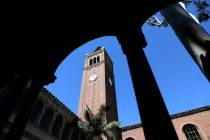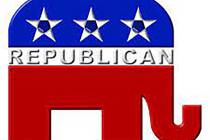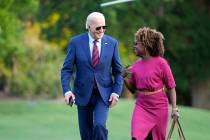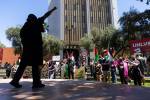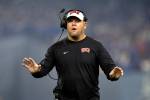UNLV budget debate actually begins now that childish chanting is over
Now that we’ve had the “highwayman” approach — stand and deliver or else — by the mob of students and faculty at UNLV Thursday evening, we are beginning to get a few facts and rational arguments, instead of slogans, chants and crude signs.
Casey Hendrickson over at KXNT-AM, 840 snapped a few of my synapses when he e-mailed Friday seeking fodder for his evening call-in show. He wrote: “Some short time ago you published an article on how UNLV professors were spending little time in the classroom teaching. All while collecting six figure incomes. I am having problems finding this article. Could you please send me a link, or copy of the article?”
It took only a couple of minutes to lay my hands on it and forward the URL. Hendrickson used the story to further a lively debate on the program.
The story was one by special projects writer Alan Maimon and it appeared on June 12, 2008. Maimon reported that UNLV had gone on a hiring binge in the past year, hiring 60 more professors and administrators at a cost of 8 percent more than in the prior year.
This was reported while Gov. Jim Gibbons was telling the university system to reduce spending by about $97 million for the 2009-2011 budget period.
Maimon also noted, “In 2007, 315 top academic personnel at UNLV got more than $100,000 in state-funded salary, up from 270 just a year earlier.”
Further down in the story he reported, “The university's stated expectation -- though it falls short of a requirement -- is that full-time, non-research faculty members will teach three classes a semester. On average, each of those faculty taught between three and four courses at the bachelor's, master's or doctoral level in the fall 2007 semester, a Review-Journal analysis shows. But of the university's 828 professors who taught at all, more than 30 percent handled fewer than three courses.
“UNLV has roughly 960 full-time faculty, which means about 130 professors didn't teach at all in the fall semester. Some of those professors were doing research, were on leave or were given administrative roles for the semester.
“A full professor at UNLV makes an average of $114,500 a year, about $5,000 more than the average for full professors at public doctoral institutions nationwide, according to the American Association of University Professors.”
But Chancellor Jim Rogers forgets the fat years and complains about the coming lean years.
“You have heard your Governor, propose to cut the budget for your colleges and universities by 36%. Let me tell you what this will mean for higher education,” he says in his state of the system address.
“Last fiscal year, operating budget cuts of 4.5% or $ 28.3 million were made, and this fiscal year cuts of 7.92% or $41.9 million were made. These were reductions to what was already starvation-level funding. As a consequence, you are seeing a reduction in classes and an increase in the number of students jammed into each class. This means that students will take much longer to graduate, it will cost them more money and they will lose time when they could be working and adding real value to Nevada’s economy. At every campus, programs have been cut – programs that were part of building the quality of life of Nevada’s communities.”
But over at Nevada Policy Research Institute, Andy Matthews, vice president for communications, sent an e-mail answer to that.
“It is also deeply ironic to hear Chancellor Rogers state that Nevada needs to contribute more to higher education, as reality strongly suggests otherwise,” Matthews writes. “From Fiscal Year 2002 through Fiscal Year 2007, legislative spending on higher education increased by 60 percent, even as student enrollment increased by only 22.9 percent during that same period.”
NPRI’s Patrick Gibbons points out, “Even with the new budget cuts, NSHE will still have $1.28 billion to spend over the next biennium, 25 percent more than it had during the 2001-03 biennium. Adjust for inflation, and there is virtually no difference between the 2010-11 and the 2001-03 appropriations for higher education.
“The Nevada System of Higher Education does face tough choices. It must learn how to prioritize spending, eliminate waste, use technology to lower costs, and get back to basics—i.e. actually educating students, not just providing jobs to Ph.D.s.”
Geoffrey Lawrence of the same NPRI says tuition at UNLV is artificially low.
“According to data maintained by the National Center for Educational Statistics, Nevada boasts the lowest tuition rates in the country,” he says. “In fact, NCES data shows that for 2006-2007, the last year for which data is available, the cost of tuition and mandatory fees at Nevada's public four-year universities was only 50 percent of the national average. In other words, students in the system are subsidized more than any other group of students in the country and pay only half of what the average American student pays to go to a subsidized university.
Now we’re talking facts and figures and not chanting slogans and demanding other people’s money.










